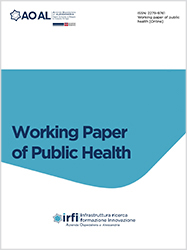A survey on prostate symptoms and quality of life in men with comorbidities at the Public Hospital SS. Antonio e Biagio e Cesare Arrigo of Alessandria
All claims expressed in this article are solely those of the authors and do not necessarily represent those of their affiliated organizations, or those of the publisher, the editors and the reviewers. Any product that may be evaluated in this article or claim that may be made by its manufacturer is not guaranteed or endorsed by the publisher.
Authors
Background: Benign Prostatic Hyperplasia (BPH) is a pathological condition characterized by an increase in the size of the prostate gland which can lead to Lower Urinary Tract Symptoms (LUTS) that affect the quality of life. Methods: the International Prostatic Symptoms Score (IPSS) questionnaire was used to assess the symptoms of benign prostatic hyperplasia in male individuals with comorbidities, patients over 30 years of age who had not been diagnosed with urological or prostatic disease. Results: a total of 102 IPSS questionnaires were analyzed. According to age, 62.1% of patients reported mild symptoms, 34% had moderate symptoms, and 3.9% had severe symptoms, consistent with increasing age. Among patients who completed the questionnaire, a higher percentage (67%) had voiding dysfunction during the filling phase. Conclusions: in agreement with the literature, the IPSS questionnaire can be used as a screening model for the early detection and management of LUTS. As demonstrated by our results, symptoms worsen with age, therefore early detection may reduce the risk of complications and anticipate a visit to a specialist.
How to Cite

This work is licensed under a Creative Commons Attribution-NonCommercial 4.0 International License.







